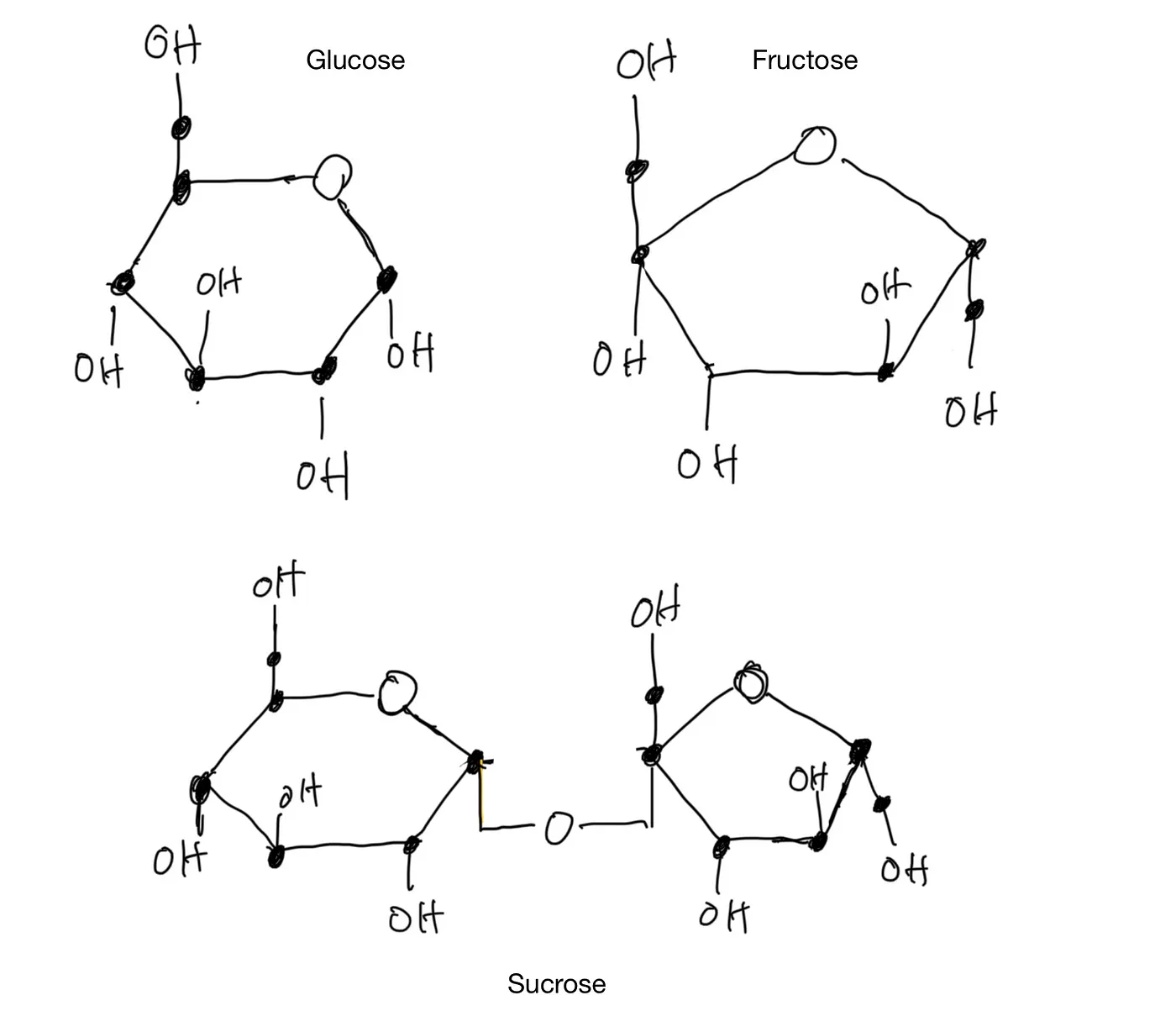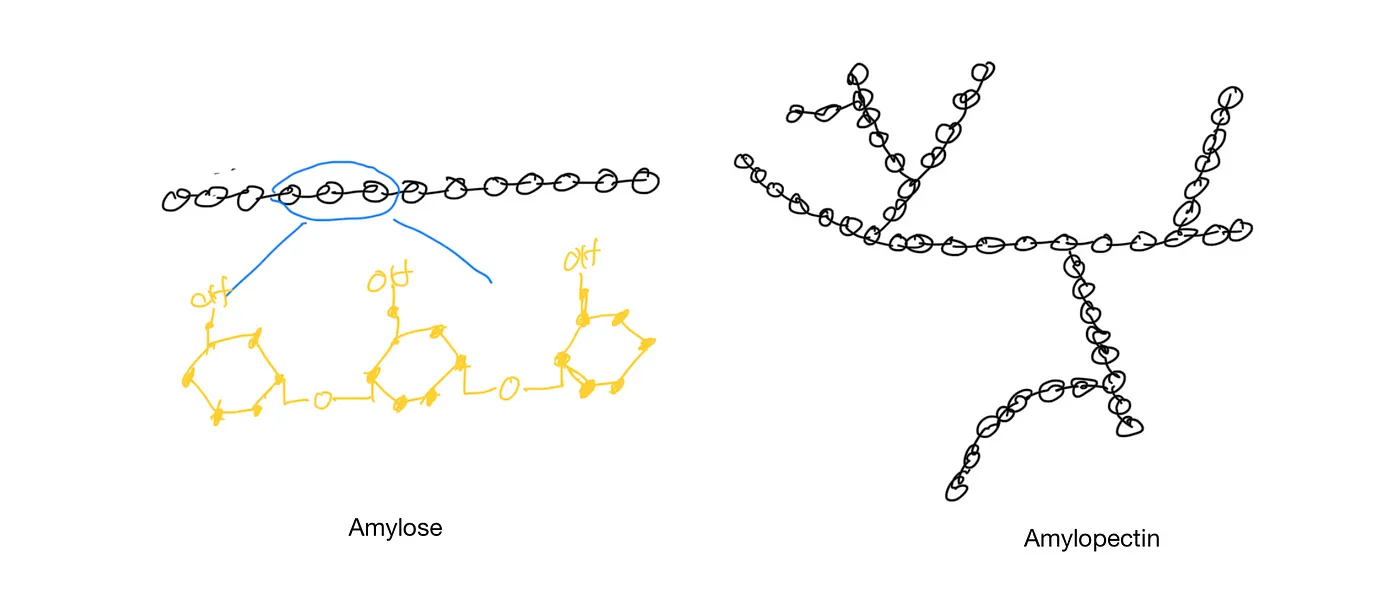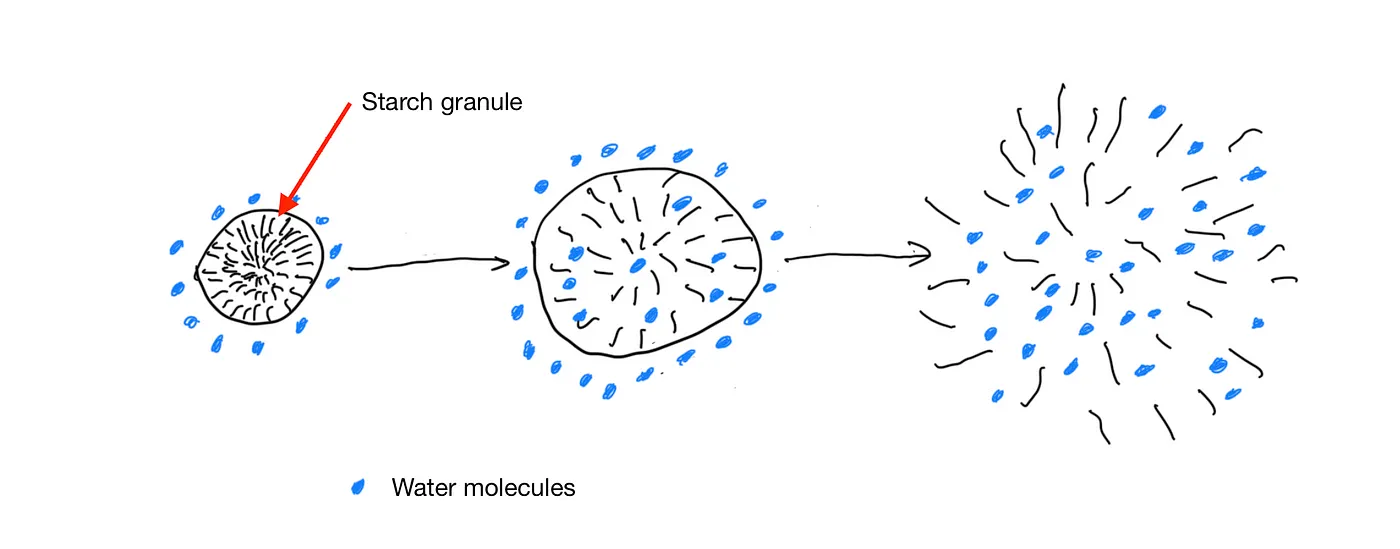Carbohydrate
Between 60⁰C and 80⁰C is when starches begin to gelatinize. Starch is probably the most consumed carbohydrate in many people’s diets. Chemically, starch is a polysaccharide. Saccharide comes from a Greek word meaning “sugar.” The simplest sugars are glucose and fructose. They are monosaccharides. The molecule of table sugar (sucrose) consists of one glucose and one fructose, so it’s a disaccharide. If we have a small number (2 to about 8) of simple sugar monomers chained together, we call them oligosaccharides. More than that, it’s a polysaccharide. How sweet a substance tastes depends on the shape of its molecules. You can think of the sugar molecules as keys that unlock the sweet taste cells. Fructose tastes sweeter than glucose, with the same calorie content. Chemically, high fructose corn syrup is very similar to honey. So nutritionally, there is nothing inherently evil about high fructose corn syrup compared to cane sugar or honey. What’s evil is perhaps the corn subsidy that makes it so cheap.

Glucose, fructose, and sucrose
Starch is not the only polysaccharide in our diet. Cellulose, another polysaccharide, is the main building block of plant cell walls. Due to the different ways the glucose monomers are linked together in cellulose (see figure 8), it cannot be broken down by human enzymes, hence indigestible. But it does have nutritional value. One contribution it makes is interfering with the digestion of simple sugar. It could wrap up the high-calorie food ingredients and escort them out of your digestive tract. Insoluble fibers are also food for your gut microbiome, which is the focus of a lot of active research. Plant cell walls begin to break down at temperatures between 88⁰C and 92⁰C. Vegetables become mushy if boiled too long. But if you are trying to make creamy mashed potatoes, that’s the internal temperature you need to get the potatoes up to.

Starch and Cellulose
A common starch in the kitchen is rice. Starch molecules come in two configurations: amylose and amylopectin. Amylose is a long straight chain, while amylopectin is highly branched. Long-grain rice typically has the highest percentage of amylose, while the high amount of amylopectin makes short-grain rice sticky, because the branches of amylopectin are very good at trapping water molecules.

Amylose and Amylopectin
Starches exist as granules in rice. These starch molecules in the granules form crystalline regions under ambient temperature, giving rise to the hardness of uncooked rice. At room temperature, water cannot get in between the molecules. You can submerge rice in water forever, and it will not cook. Under heat, the intermolecular bonds between starch molecules break down, allowing water molecules to come in and attach to the binding sites. The granules swell and dissolve in water. This is called gelatinization.

Starch Gelatinization
The gelatinization temperature depends on the exact type of starch. In the context of temperature control, the important points are:
- Gelatinization requires a specific temperature to occur; it will not take place in cold water, regardless of the duration of exposure. For instance, a technique in Chinese cuisine is to marinate protein in cornstarch. When you stir-fry the meat, you need to let it come up to temperature so the starch gelatinizes before you start stirring, as in “stir-fry.”
- Starches are commonly used as a thickener. Be careful not to add too much. All movements in liquid slow down at lower temperatures. Your sauce will become thicker as it cools down between the time when it’s removed from the stove and when it’s served at the dining table.
When starch cools down, the dissolved starch molecules start to develop cross-links among them and rearrange themselves in crystalline structures. This is called retrogradation. It doesn’t return the starch to the uncooked state, but this process cannot be completely undone by reheating either. That’s why the best fried rice is made with leftover rice. Without the heating/cooling cycle, rice does not attain the right texture for fried rice.